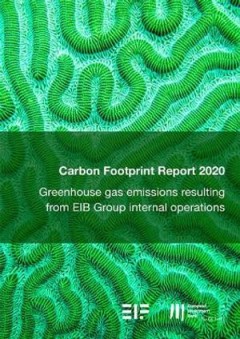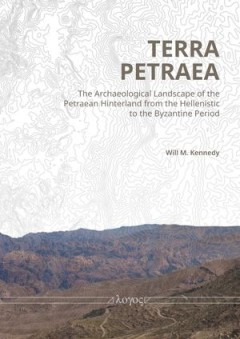Filter by

Keeping the World’s Environment under Review
How do we take stock of the state and direction of the world’s environment, and what can we learn from the experience? Among the myriad detailed narratives about the condition of the planet, the Global Environment Outlook (GEO) reports—issued by the United Nations Environment Programme—stand out as the most ambitious. For nearly three decades the GEO project has not only delivered iconic …
- Edition
- -
- ISBN/ISSN
- 9789633864326
- Collation
- -
- Series Title
- -
- Call Number
- -

Narratives and Comparisons
As a powerful tool in the production of knowledge, comparing plays a crucial part in the sciences and the humanities. This volume explores the relationship between comparing and narrating in epistemic practices and clarifies the ways in which narratives enable or impede practices of comparing. It takes into account related activities, such as measuring and classifying, modeling, establishing no…
- Edition
- Edisi 1
- ISBN/ISSN
- 9783839454152
- Collation
- -
- Series Title
- -
- Call Number
- -

Modelling and Control of Switched Reluctance Machines
Today, switched reluctance machines (SRMs) play an increasingly important role in various sectors due to advantages such as robustness, simplicity of construction, low cost, insensitivity to high temperatures, and high fault tolerance. They are frequently used in fields such as aeronautics, electric and hybrid vehicles, and wind power generation. This book is a comprehensive resource on the des…
- Edition
- -
- ISBN/ISSN
- 9781839681608
- Collation
- -
- Series Title
- -
- Call Number
- -

A Diffusion Hydrodynamic Model
The Diffusion Hydrodynamic Model (DHM), as presented in the 1987 USGS publication, was one of the first computational fluid dynamics computational programs based on the groundwater program MODFLOW, which evolved into the control volume modeling approach. Over the following decades, others developed similar computational programs that either used the methodology and approaches presented in the D…
- Edition
- -
- ISBN/ISSN
- 9781839628191
- Collation
- -
- Series Title
- -
- Call Number
- -

Advances in Spacecraft Attitude Control
Spacecraft attitude maneuvers comply with Euler's moment equations, a set of three nonlinear, coupled differential equations. Nonlinearities complicate the mathematical treatment of the seemingly simple action of rotating, and these complications lead to a robust lineage of research. This book is meant for basic scientifically inclined readers, and commences with a chapter on the basics of spac…
- Edition
- -
- ISBN/ISSN
- 9781789848021
- Collation
- -
- Series Title
- -
- Call Number
- -

Advances in Modelling and Control of Wind and Hydrogenerators
Rapid deployment of wind and solar energy generation is going to result in a series of new problems with regards to the reliability of our electrical grid in terms of outages, cost, and life-time, forcing us to promptly deal with the challenging restructuring of our energy systems. Increased penetration of fluctuating renewable energy resources is a challenge for the electrical grid. Proposing …
- Edition
- -
- ISBN/ISSN
- 9781838805326
- Collation
- -
- Series Title
- -
- Call Number
- -

EIB Working Paper 2022/02 - How to foster climate innovation in the European …
Relying on the EIB Online Survey on Climate Innovations, we investigate the different climate innovations European firms are currently using, their motivations and challenges, and their views on current regulatory frameworks. The analysis confirms that there’s a strong link between climate innovation and firm performance, but also that firms suffer from the low availability of finance. To cre…
- Edition
- -
- ISBN/ISSN
- 9789286152115
- Collation
- -
- Series Title
- -
- Call Number
- -

EIB Group Carbon Footprint Report 2020
This report provides a comprehensive breakdown of EIB Group greenhouse gas emissions arising from internal operations at head office locations in 2020. It also analyses comparatively against performance in previous years dating back to the 2007 baseline. As a result of the teleworking arrangements during the COVID-19 pandemic, the EIB Group’s net emissions in 2020 were more than 70% below 201…
- Edition
- -
- ISBN/ISSN
- 9789286149290
- Collation
- -
- Series Title
- -
- Call Number
- -

Climate Solutions
Climate change is the biggest threat humanity faces. So big, in fact, that it is sometimes hard to know what each of us, as individuals, can do to counter it. Climate Solutions details the challenges, lays out the solutions and shows you which ones you can make part of your life. Written by experts at the EU climate bank, each chapter helps you figure out what you can do in areas that range fro…
- Edition
- -
- ISBN/ISSN
- 9789286144837
- Collation
- -
- Series Title
- -
- Call Number
- -

Terra Petraea
Situated in a deep valley and flanked by high mountain ranges, Petra's urban development was only possible through a well-structured organization of its surrounding landscape. This study presents a first comprehensive archaeological and culture-historical characterization of the Petraean hinterland and researches overall strategies of the spatial organization of the city's rural environs. Ba…
- Edition
- -
- ISBN/ISSN
- 9783832551711
- Collation
- -
- Series Title
- -
- Call Number
- -
 Computer Science, Information & General Works
Computer Science, Information & General Works  Philosophy & Psychology
Philosophy & Psychology  Religion
Religion  Social Sciences
Social Sciences  Language
Language  Pure Science
Pure Science  Applied Sciences
Applied Sciences  Art & Recreation
Art & Recreation  Literature
Literature  History & Geography
History & Geography